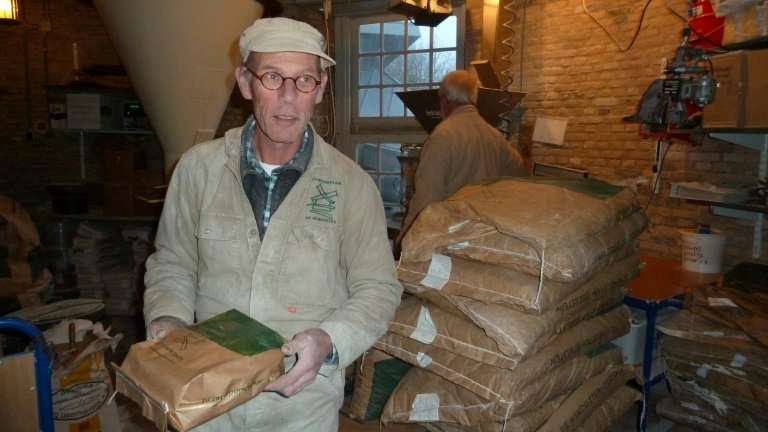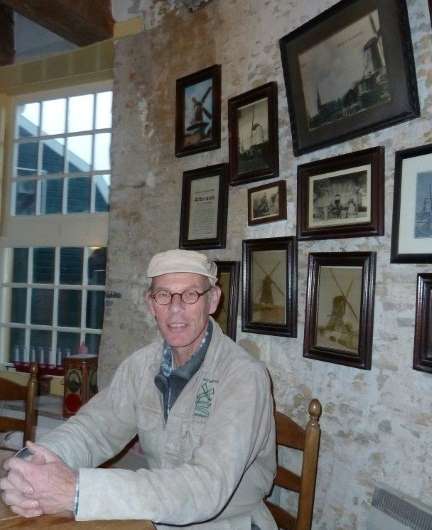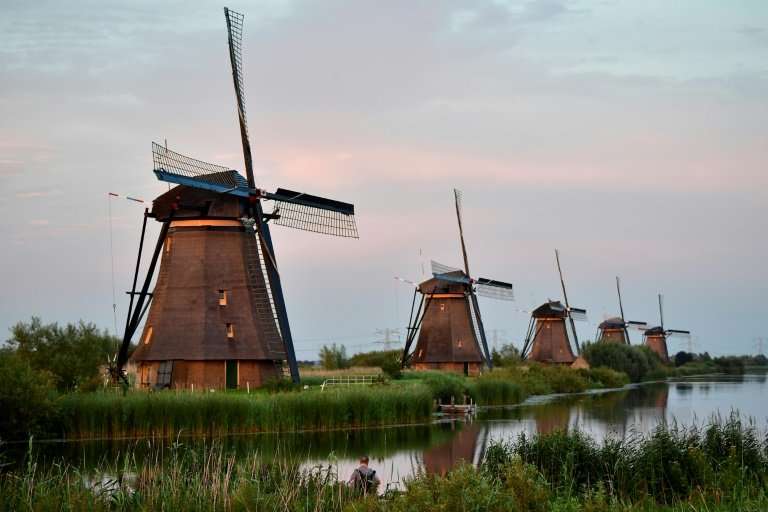Dutch millers get fresh wind in their sails

An icy wind blows the windmill's soaring sails, turning them quickly and cranking the large stone wheels inside in a time-honoured method of grinding grain.
"I live from the wind," says Dutch miller Maarten Dolman, one of only about 40 people in the Netherlands to still earn a living from making flour in a way that has changed little down the centuries.
"It's been my engine for the past 30 years," he smiles, as jute sacks quickly fill with powdery white granules.
After making his early morning deliveries to local bakeries, Dolman starts on his daily production of up to 1,000 kilos (2,200 pounds) of flour aided solely by the power of the bone-achingly cold wind, which moans across the low-lying northern European country.
But the 56-year-old has renewed pride in his work at his windmill the "Windotter", which stands tall above the small central town of Ijsselstein, population 35,000.
Last month "the craft of the miller operating windmills and watermills" was officially included on UNESCO's list of "the intangible cultural heritage of humanity".
"Our craft is now protected. It is very important as well for the next generation coming after us to conserve and learn this job," says Dolman.
From father to son
The father of two, whose overalls and cap, and even his round glasses, seem permanently covered in a light dusting of white, says he was "born in flour."

His own father, who bought his first mill in 1960, taught him the trade as a boy, and now one of Dolman's two sons is learning the necessary skills from him to carry on the business.
Passing on his craft is a valuable mission in a country where, at their peak in the 19th century, there were once 9,000 windmills.
Now professionals and volunteers help maintain and operate about 1,200 remaining windmills to grind flour or regulate water levels—an important defence, with some 70 percent of the Netherlands lying below sea level.
Dolman, chairman of the Guild of Traditional Flour Mill Millers, helped lead the fight to win UNESCO recognition, and said it meant "a lot" to be added alongside other cultural treasures, such as the art of the dough-twirling pizza makers of Naples.
The application, backed by the Dutch ministry of culture, said in its submission that "wind and water are in plentiful supply in the Netherlands, and mills have therefore always been an integral part of the Dutch landscape," adding the "first descriptions of Dutch windmills date from around 1200".
"With a declining number of people earning their livelihood from the craft, millers today also play a key role in transmitting the cultural history of the practice," the UNESCO site says.
In demand
Inside the Windotter, time seems to have stood still. An ancient telephone hangs on the wall, old tools lay scattered about with tattered accounts books, all lightly covered in flour.
As the 26-metre (86-foot) long majestic sails creak away in the wind, Dolman's wooden clogs tap up and down the steep stairways.

It's a scene far removed from the more polished line of some 19 windmills at the southwestern tourist attraction of Kinderdijk, which were included on UNESCO's list of cultural heritage in 1997.
With its brick tower stretching up five floors, the Windotter is one of the country's biggest windmills. Built in 1732, it was completely restored in 1987.
Since then it has been at work fulltime, five days a week. Bags of flour sell like hot cakes in the shop at its base, white or brown, or flour milled from rye, barley or oats.
"Local residents but also people from further away come here to buy their flour for bread or pancakes, sometimes even arriving by bike in lousy weather," said one of the saleswomen. She is among a dozen volunteers, who help to run the shop.
Ensuring the craft survives
Recognition means the UN's educational, scientific and cultural organisation has committed to financing certain activities to safeguard the millers' craft, including training, internships and educational activities.
Since 1972 when it was founded with the help of Dolman's father, the Guild of Volunteer Millers has offered courses in theory and practice.
For example, "aspiring millers learn to operate a mill safely" and have to spend a minimum of 150 hours doing practical work at different mills and in every season.
The courses include learning how to read the wind, or how many sails are needed, and are given by 105 instructors and 11 master millers. Almost 2,000 people have been awarded qualifications since the guild's courses began.
Dutch millers "must pass this on to young people, who don't have their roots in this field, so that the craft survives," insists Dolman.
© 2018 AFP


















